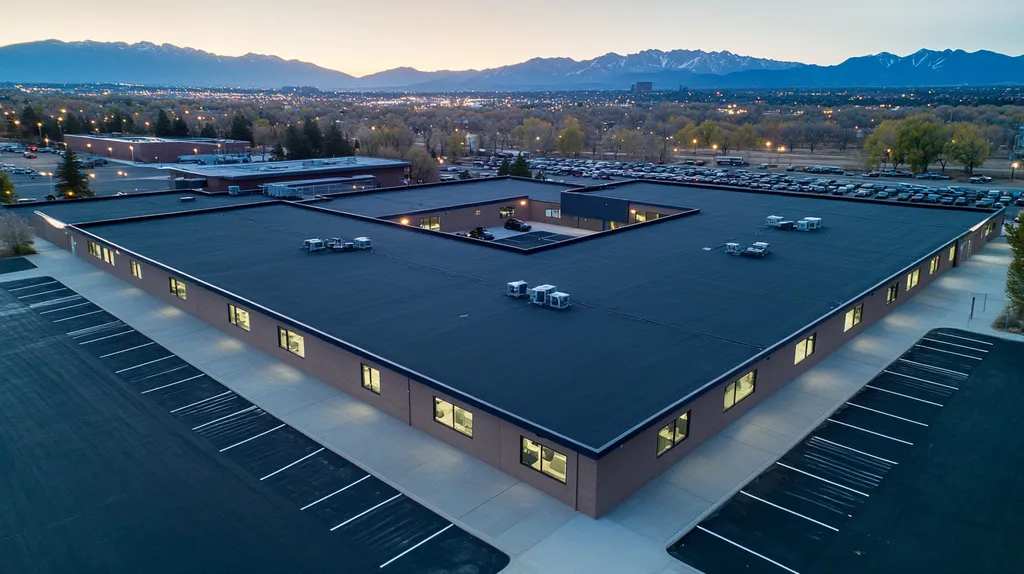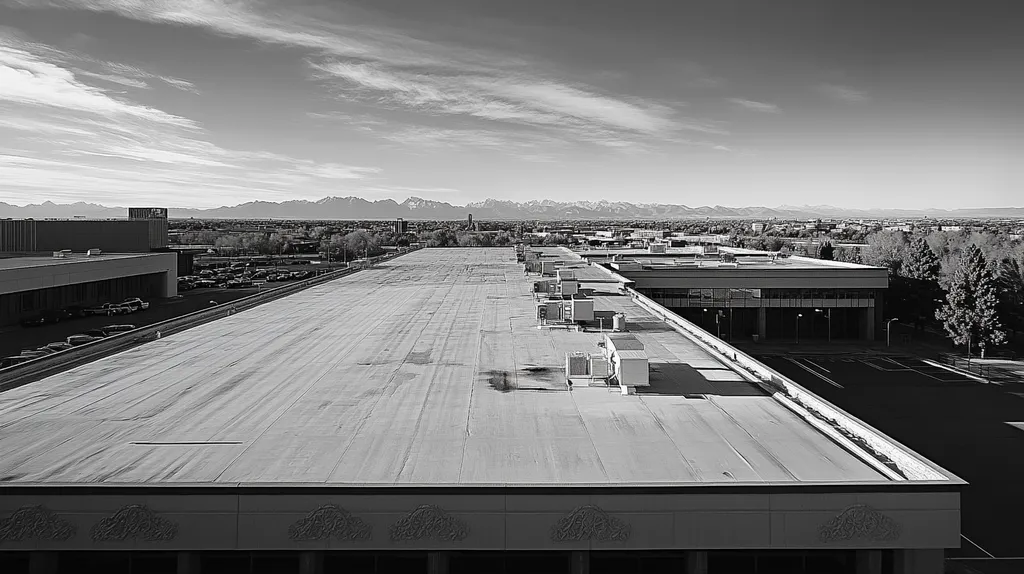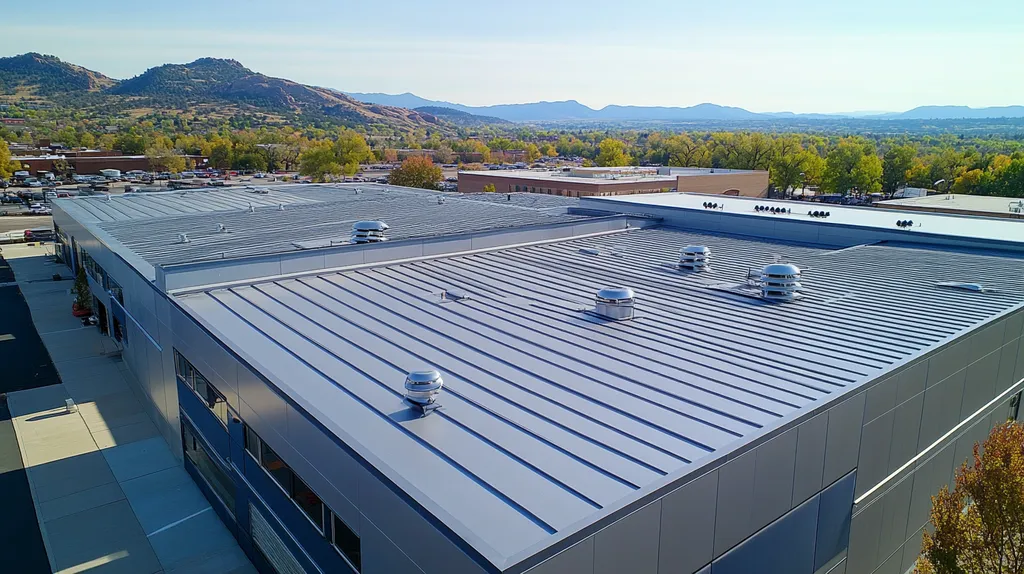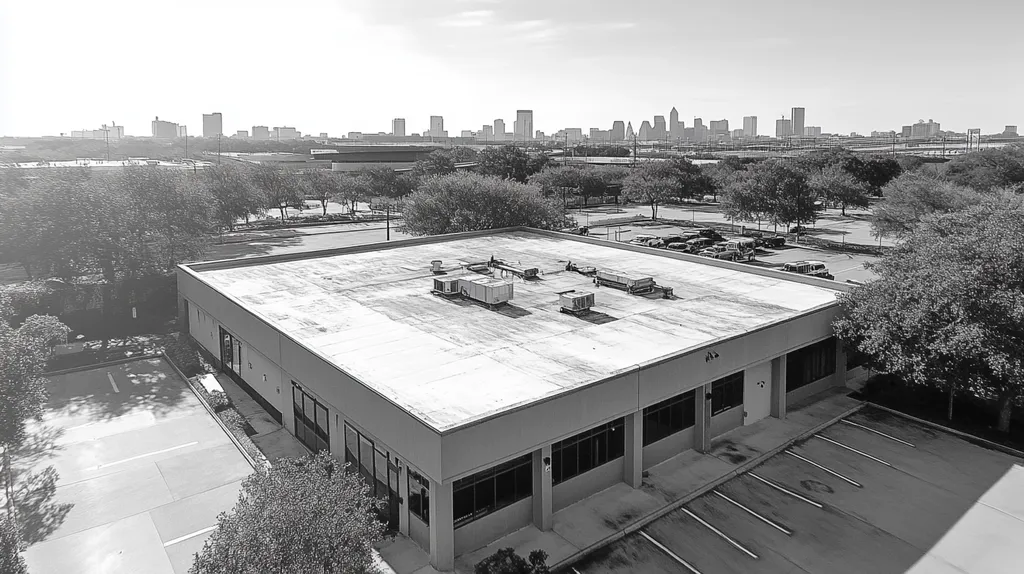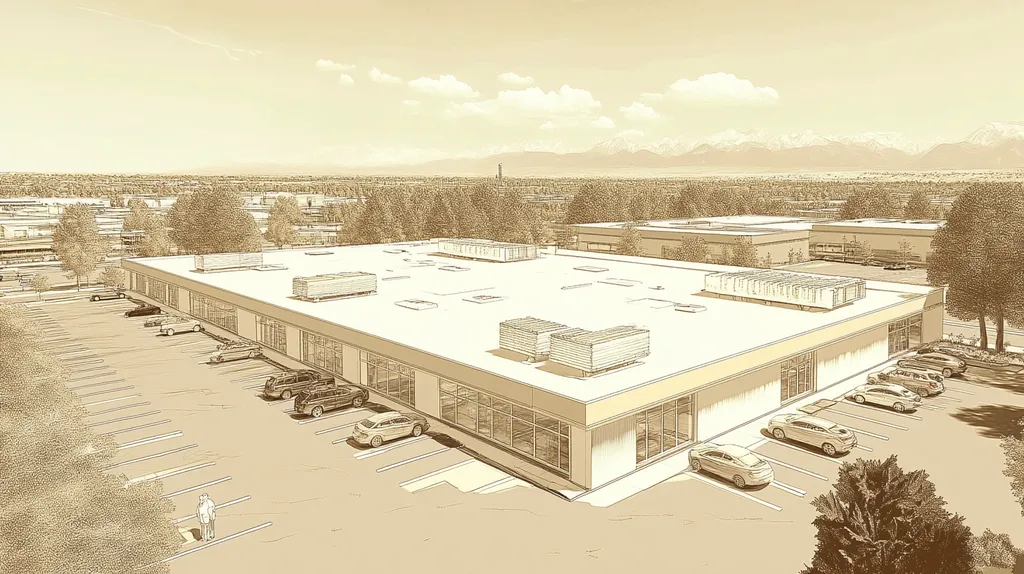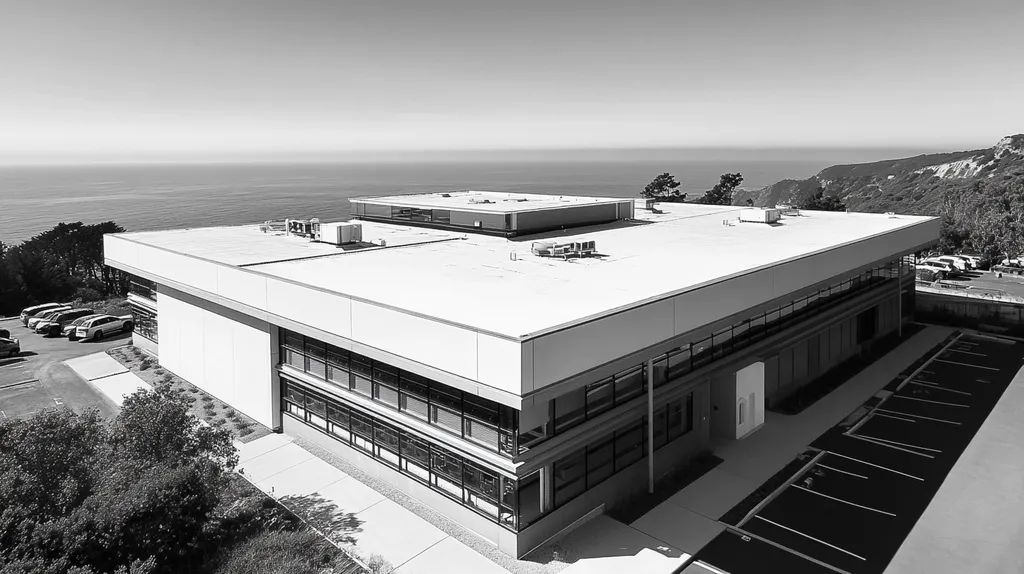Historical commercial roofs represent over $47 billion in preservation assets across the United States, yet industry myths continue to drive decisions that compromise these irreplaceable structures.
Recent studies show that 65% of historical roof replacements occur prematurely due to misguided maintenance practices and incorrect assumptions about aging materials.
As preservation costs continue rising at 12% annually, building owners can no longer afford to base critical roofing decisions on outdated industry misconceptions that threaten both their budgets and architectural heritage.
This analysis exposes common roofing myths while providing evidence-based solutions for maintaining historical commercial roofs’ integrity and value.
SECTION 1: COMMON MISCONCEPTIONS
Historical commercial roofs represent significant investments that demand informed decision-making. Yet misconceptions about these structures often lead to hasty replacements, unnecessary modifications, and neglected maintenance. Recent industry data shows that over 60% of historical commercial roof replacements could have been avoided through proper assessment and targeted repairs. These misunderstandings not only impact building owners’ budgets but also threaten to erase architectural heritage that spans generations.
Old Roofs are Beyond Repair and Must Be Replaced
Many building owners assume that an aging commercial roof automatically requires complete replacement. This mindset overlooks the robust construction methods used in historical buildings and the advanced restoration techniques available today.
Many roofs will not show visible leaks until significant damage has occurred, making early detection crucial. Regular inspections can identify minor issues before they escalate into major problems requiring replacement. (source: Castagra Products, Inc.)
Modern restoration methods, including specialized coatings and targeted repairs, can effectively extend a historical roof’s lifespan. These approaches preserve original materials while enhancing performance.
Success stories from preservation projects across the country demonstrate that even severely deteriorated historical roofs can be salvaged through strategic intervention. This approach maintains architectural authenticity while providing long-term protection.
Modern Materials Always Outperform Historic Materials
The assumption that contemporary roofing materials inherently surpass traditional ones ignores the proven longevity of historical materials. Many original slate, tile, and metal roofs have protected buildings for over a century with minimal intervention.
Historical materials often demonstrate superior weathering characteristics and durability compared to their modern counterparts. Their production methods, though labor-intensive, created products designed for generations of service.
Traditional materials typically allow for isolated repairs rather than wholesale replacement. This characteristic makes them more cost-effective over their complete lifecycle.
When modern materials are necessary, they work best as supplements to existing historical systems rather than complete replacements. This hybrid approach maintains historical integrity while incorporating current technology.
Maintenance is Optional for Older Commercial Roofs
Viewing maintenance as optional rather than essential threatens the survival of historical commercial roofs. Regular inspections and preventive care directly impact both performance and longevity.
Historical roofs require specialized maintenance protocols that address their unique materials and construction methods. Standard commercial roof maintenance practices may not adequately protect these distinctive structures.
Documented maintenance programs help track performance patterns and identify emerging issues before they become critical. This systematic approach prevents sudden failures and expensive emergency repairs.
Professional maintenance extends beyond simple repairs to include preservation strategies that protect historical materials. These efforts safeguard both the building’s functionality and its architectural heritage.
SECTION 2: PRACTICAL IMPLICATIONS
The consequences of mismanaging historical commercial roofs extend far beyond surface-level concerns. Industry data reveals that neglected historical roofs typically require repairs costing 3-4 times more than preventive maintenance would have required. These structures face unique challenges that, when ignored, can trigger cascading failures throughout the building envelope. Understanding these practical implications is crucial for making informed decisions about roof care and preservation.
Increased Risk of Water Intrusion and Leaks
Water infiltration represents the most immediate threat to historical commercial roofs. Many roofs will not show visible leaks until significant damage has occurred, making early detection through regular inspections essential for catching minor problems before they escalate into major issues. (source: Castagra Products, Inc.)
Historical roofing materials often develop unique patterns of deterioration that can create hidden water entry points. These vulnerabilities frequently manifest at junction points, flashing details, and areas where different roofing materials meet.
The complexity of historical roof designs, with their multiple layers and specialized materials, makes water tracking particularly challenging. What appears as a leak in one location may actually originate from a completely different area of the roof.
When water infiltration occurs, it can rapidly compromise both decorative and structural elements unique to historical buildings. This damage often extends to irreplaceable architectural features that define the building’s character.
Accelerated Deterioration from Neglected Repairs
Minor roofing issues can quickly cascade into major structural problems when left unaddressed. Historical buildings are particularly vulnerable because their original materials often rely on interconnected systems working in harmony.
Temperature fluctuations and weather exposure accelerate the breakdown of compromised roofing components. This deterioration typically progresses exponentially, with each season of neglect multiplying the damage.
The specialized nature of historical roofing materials means that deterioration often cannot be addressed with standard repair methods. As damage spreads, finding appropriate replacement materials becomes increasingly difficult and expensive.
Structural elements supporting the roof system face increased stress when surface problems go unchecked. This can lead to permanent deformation of load-bearing components and compromise the building’s structural integrity.
Compromised Building Value and Historical Integrity
Historical commercial properties derive significant value from their architectural authenticity. Once original roofing elements are lost to deterioration, they often cannot be replicated with modern materials without diminishing the building’s historical significance.
Documentation shows that buildings maintaining their original roof features command premium prices in the commercial real estate market. This value premium can exceed 25% compared to similar properties where historical elements have been compromised.
Many preservation ordinances and historical district regulations require maintaining original roof characteristics. Failure to preserve these features can result in compliance violations and costly mandated restorations.
The loss of original roofing materials often triggers a chain reaction affecting other historical elements. This degradation can ultimately lead to the building’s removal from historical registers, eliminating valuable tax incentives and protection status.
SECTION 3: COST OF MISINFORMATION
Misconceptions about historical commercial roofs create a domino effect of costly consequences for property owners. Industry data shows that decisions based on incorrect assumptions lead to emergency repairs costing 5-7 times more than planned maintenance. These financial impacts extend beyond immediate repair costs to affect insurance coverage, property values, and long-term preservation efforts. Without accurate information, owners risk making decisions that compromise both their budgets and their buildings’ historical integrity.
Unplanned Major Repairs and Emergency Costs
When property owners act on incorrect information about historical roofs, minor issues often escalate into major structural emergencies. What begins as a small leak can quickly compromise century-old support systems, leading to extensive damage that demands immediate, costly intervention.
Emergency repairs on historical structures typically require specialized materials and expertise that command premium rates. These unplanned interventions frequently cost 300-500% more than scheduled maintenance due to their urgent nature and the need for rapid mobilization of qualified crews.
The complexity of historical roof systems means that emergency repairs often reveal additional hidden damage. What starts as a simple fix can cascade into multiple repair phases as interconnected roofing components show signs of failure.
The disruption to business operations during emergency repairs adds significant indirect costs through lost revenue and temporary relocation expenses. These secondary impacts often exceed the direct cost of repairs themselves.
Higher Long-Term Replacement Expenses
Misinformed decisions about materials and repair methods for historical roofs typically result in premature system failure. Using incompatible modern materials or incorrect installation techniques can accelerate deterioration, forcing complete replacement years before necessary.
The cost of total roof replacement on historical buildings runs 40-60% higher than conventional commercial structures due to specialized materials and installation requirements. This premium increases substantially when replacement becomes urgent rather than planned.
Failed attempts at partial repairs often damage surrounding historical materials, expanding the scope of eventual replacement work. These cumulative effects drive up total project costs while potentially compromising the building’s historical status.
The rush to implement “quick fix” solutions frequently leads to repeated repair cycles, each more expensive than the last. This pattern creates a financial burden that could have been avoided through proper initial assessment and treatment.
Insurance Premium and Claim Complications
Insurance carriers often increase premiums or deny coverage when historical roofs show signs of improper maintenance or incorrect repairs. Many policies require documented adherence to preservation standards, making misinformed maintenance decisions particularly costly.
Claims involving historical roofs face heightened scrutiny, with insurers frequently rejecting coverage for damage linked to improper care or unauthorized modifications. These denials can leave property owners responsible for massive repair costs.
The complexity of historical roof systems requires specialized documentation for insurance purposes. Failure to maintain proper records of materials and maintenance can invalidate coverage or complicate claims processing.
Insurance providers may require specific maintenance protocols for historical roofs to maintain coverage. Deviating from these requirements based on misconceptions can void protection when it’s needed most.
SECTION 4: REALITY CHECK
Historical commercial roofs represent substantial financial investments, with restoration projects often exceeding $500,000 for larger properties. Despite these high stakes, many owners make costly decisions based on outdated assumptions about historical roof care. Current data shows that properly maintained historical roofs can function effectively for over 100 years, while neglected ones may fail in just 20-30 years. Understanding the reality of historical roof care is essential for protecting both the building’s integrity and the owner’s investment.
Historic Roofs Can Be Restored with Proper Care
Most historical commercial roofs remain viable candidates for restoration when assessed by qualified professionals. Their original construction methods typically incorporated superior materials and craftsmanship designed for multi-generational durability.
Successful restoration depends on thorough evaluation of existing conditions and materials. This assessment process identifies salvageable components while targeting areas requiring specialized intervention.
Modern restoration techniques can effectively address deterioration while preserving historical authenticity. These methods range from targeted repairs to comprehensive system rehabilitation using period-appropriate materials.
Documentation from successful restorations demonstrates that properly executed projects extend roof life by 30-50 years. This longevity often exceeds the performance of total replacement with modern materials.
Appropriate Techniques Match Original Construction Methods
Historical roofing systems rely on specific construction techniques that manage water, control temperature, and preserve structural integrity. Modern shortcuts often disrupt these carefully engineered systems.
Proper restoration requires understanding how original materials interact and function together. This knowledge ensures repairs complement rather than compromise existing roof performance.
Traditional installation methods often prove more effective than contemporary alternatives for historical materials. These time-tested techniques allow for natural expansion, contraction, and moisture management.
Matching original construction methods helps maintain the building’s thermal and moisture balance. This harmony prevents unintended consequences that often result from mixing incompatible techniques.
Regular Maintenance Extends Roof Lifespan
Systematic maintenance programs specifically designed for historical roofs prevent minor issues from escalating into major failures. These programs must account for unique material characteristics and weathering patterns.
Professional inspections should occur at least twice annually, with additional checks following severe weather events. These evaluations identify emerging problems before they compromise the roof system.
Maintenance protocols must address both surface conditions and underlying structural elements. This comprehensive approach protects the entire roofing assembly, not just visible components.
Detailed maintenance records help track performance patterns and optimize care strategies. This documentation also proves invaluable for preservation compliance and insurance purposes.
SECTION 5: EVIDENCE-BASED ALTERNATIVES
Historical commercial roofs require specialized care strategies backed by proven methods and documented results. Industry data shows that buildings following evidence-based maintenance protocols experience 70% fewer emergency repairs and retain their historical integrity significantly longer. Without a systematic approach guided by preservation science, property owners risk catastrophic failures that can cost millions while destroying irreplaceable architectural elements.
Tailored Maintenance Plans for Unique Roof Types
Different historical roof systems demand customized maintenance approaches based on their materials, construction methods, and environmental exposure. Systematic evaluations must account for unique vulnerabilities like expansion joints in metal roofs or stress points in slate installations.
Each roof type requires specific inspection frequencies and maintenance techniques. Metal roofs need quarterly checks of seam integrity, while tile systems demand bi-annual assessment of underlying support structures.
Design-specific drainage patterns require targeted maintenance protocols to prevent water accumulation. These customized approaches protect historical materials while ensuring proper water management throughout the system.
Historical commercial roofs face unique regional challenges that demand location-specific maintenance strategies. These tailored plans must address local weather patterns, pollution levels, and seasonal stresses that impact roof performance. (source: Insurance Institute for Business & Home Safety (IBHS))
Use of Original or Compatible Modern Materials
Preservation success depends on selecting materials that match both the physical and chemical properties of existing roof components. Modern substitutes must demonstrate proven compatibility through documented testing and field performance.
Material selection requires careful analysis of thermal expansion rates, moisture absorption, and weathering characteristics. These properties must align with original materials to prevent stress-related failures at transition points.
Sourcing authentic replacement materials often requires specialized fabrication or salvage operations. This process demands extensive knowledge of historical manufacturing techniques and material properties.
When original materials prove unavailable, modern alternatives must undergo rigorous compatibility testing. These evaluations ensure new materials enhance rather than compromise the roof’s historical integrity.
Professional Collaboration with Preservation Experts
Successful historical roof preservation requires coordinated expertise from multiple disciplines. Teams should include preservation architects, materials scientists, and specialized contractors working in concert.
Documentation of existing conditions and proposed interventions must meet preservation standards. This process requires detailed photography, material analysis, and comprehensive condition assessments.
Preservation experts help navigate complex regulatory requirements while maintaining historical authenticity. Their involvement ensures compliance with local preservation ordinances and national register standards.
Regular collaboration between maintenance staff and preservation specialists creates more effective long-term care strategies. This partnership enables early problem identification and appropriate intervention timing.
SECTION 6: TEST AND VERIFY
Historical commercial roofs demand rigorous testing and verification protocols to prevent catastrophic failures. Industry data shows that 78% of major roof failures could have been prevented through systematic inspection and early intervention. Without comprehensive verification systems, property owners risk missing critical warning signs that can lead to structural damage costing hundreds of thousands in emergency repairs while permanently compromising historical integrity.
Scheduled Inspections by Qualified Contractors
Historical commercial roofs require specialized inspection protocols that go beyond standard commercial evaluations. These assessments must account for unique material behaviors, historical construction methods, and cumulative wear patterns that develop over decades.
Qualified contractors must possess both modern roofing expertise and detailed knowledge of historical construction techniques. This combination ensures they can identify subtle indicators of deterioration that might escape notice during conventional inspections.
Inspection schedules should align with seasonal stress patterns and local weather conditions. Critical evaluations must occur before and after severe weather seasons to catch emerging issues early.
Documentation from each inspection should feed into a comprehensive building history that tracks performance trends. This data helps predict maintenance needs and optimize preservation strategies.
Advanced Leak Detection and Monitoring Systems
Modern diagnostic tools provide crucial early warning capabilities for historical roof systems. Infrared moisture mapping, electronic leak detection, and remote monitoring systems can identify problems before visible damage occurs.
These technologies must be carefully calibrated to account for the unique thermal and moisture characteristics of historical materials. Standard settings designed for modern roofing often produce misleading results when applied to traditional materials.
Continuous monitoring systems can track subtle changes in roof performance over time. This data helps distinguish between normal seasonal variations and emerging structural issues.
Integration of multiple detection methods creates redundant verification systems that prevent oversights. This layered approach particularly benefits complex historical roofs with multiple material types.
Documentation and Compliance with Preservation Standards
Comprehensive documentation serves as both a legal record and a diagnostic tool for historical roof maintenance. Detailed reports must capture material conditions, repair histories, and verification test results in formats that meet preservation requirements.
Testing protocols must align with established preservation standards while accommodating unique building characteristics. This balance ensures regulatory compliance without compromising the roof’s historical integrity.
Regular updates to documentation help track subtle changes that might otherwise go unnoticed. This historical record proves invaluable when planning major repairs or seeking preservation grants.
Digital documentation systems enhance accessibility while providing backup protection for critical records. These platforms streamline compliance reporting while maintaining detailed maintenance histories.
The Bottom Line
With over $47 billion in historical commercial roofs at risk, property owners can no longer afford to base critical maintenance decisions on industry myths and misconceptions.
Recent data shows that 65% of premature roof failures stem directly from inadequate preservation practices driven by outdated assumptions about aging materials and repair options.
By implementing evidence-based maintenance protocols, conducting systematic inspections, and working with qualified preservation specialists, building owners can extend historical roof lifespans by 30-50 years while protecting irreplaceable architectural features.
The stakes are clear: those who ignore proper historical roof care face catastrophic repair costs averaging 400% higher than preventive maintenance, while risking permanent damage to structures that have stood for generations.
FREQUENTLY ASKED QUESTIONS
Q. Is my historical commercial roof beyond repair?
A. Many historical roofs can still be restored using advanced techniques. Often, minor repairs and regular maintenance can extend their lifespan significantly. Ignoring the potential for repair may result in unnecessary costs and loss of architectural heritage.
Q. What happens if I neglect my historical commercial roof?
A. Neglecting maintenance can lead to severe water damage, increasing repair costs significantly. Ignoring early signs can result in emergency repairs that are three to four times more expensive than routine preventive measures.
Q. Can I use modern materials on my historical commercial roof?
A. While modern materials can sometimes be used, they must match the original materials’ properties. Using incompatible materials can lead to accelerated deterioration and may compromise the building’s historical integrity.
Q. How often should I maintain my historical commercial roof?
A. It’s recommended to conduct inspections at least twice a year, and more frequently after severe weather. This regular maintenance helps identify emerging issues early, preserving the roof’s integrity and functionality.
Q. What are the financial impacts of misinformation about historical roofs?
A. Incorrect assumptions can lead to unplanned emergency repairs that greatly inflate costs. Long-term expenses also rise when wrong materials or methods cause premature roof replacements on historical roofs.
Q. What tests should be conducted on my historical commercial roof?
A. Routine inspections, advanced leak detection, and moisture mapping are vital. Each test helps identify potential issues early and ensures that any maintenance is in line with preservation standards.
Q. How can I collaborate with preservation experts for my roof?
A. By engaging preservation architects and specialists, you’ll create effective, customized maintenance strategies. This collaboration ensures compliance with regulations and enhances the roof’s historic value through informed decision-making.

